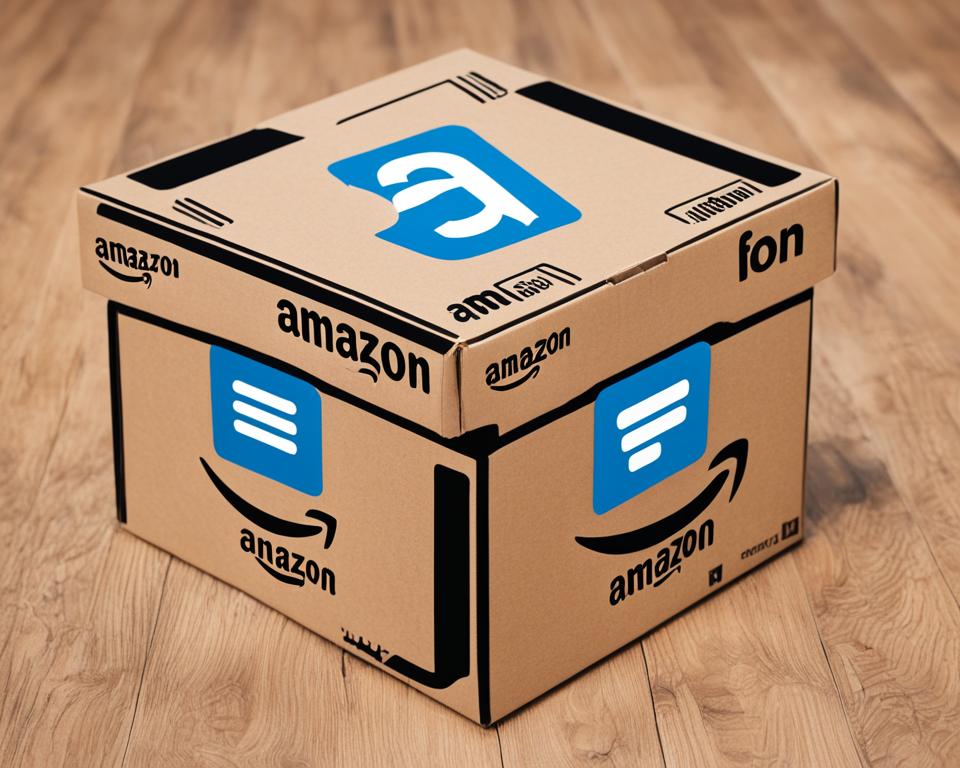Disclosure: This Post Contains Affiliate Links; We earn a commission on purchases.
Social media marketing has revolutionized the way businesses connect with their target audience and drive sales. With the rise of eCommerce and online businesses, it has become essential for companies to effectively leverage social media platforms to maximize their reach and impact.
Amazon FBA (Fulfillment by Amazon) is a popular choice for online sellers, providing access to a vast customer base and efficient logistics. By integrating Amazon FBA with social media marketing, businesses can create a winning strategy that drives success in the competitive online marketplace.
Social media advertising allows businesses to raise brand awareness, engage with customers, and promote their products. Through platforms like Facebook, Instagram, and Twitter, businesses can showcase their offerings and connect with their target audience. Effective social media management enhances brand visibility, builds customer trust, and increases sales, making it an indispensable tool for Amazon sellers.
By incorporating social media marketing into their FBA strategy, sellers can capitalize on the power of social media to grow their online business and reach new heights of success. Ultimately, the integration of Amazon FBA and social media creates a synergy that drives eCommerce growth, enhances customer engagement, and positions businesses for long-term success.
Key Takeaways:
- Integrating social media marketing with Amazon FBA is essential for online business success.
- Social media advertising enables businesses to increase brand awareness and engage with customers.
- Social media management builds customer trust and drives sales.
- The synergy between Amazon FBA and social media creates a powerful strategy for eCommerce growth.
- By leveraging social media platforms, businesses can position themselves for long-term success in the competitive online marketplace.
The Importance of Amazon Social Media Marketing
Amazon social media marketing is a crucial component for the growth and success of your online business. By effectively leveraging social media platforms, you can promote your brand, connect with your target audience, and significantly increase brand awareness.
One of the key benefits of Amazon social media marketing is the ability to engage directly with customers. Social media platforms provide a direct line of communication, allowing you to address customer questions, comments, and concerns in real time. This engagement builds trust and loyalty with your audience and ultimately drives sales.
“Social media marketing is one of the most powerful tools for businesses to connect with their target audience and foster customer engagement.” – Kelly Smith, Social Media Strategist
In addition to customer engagement, social media marketing allows businesses to monitor their competition and stay updated on current trends. By keeping an eye on competitors’ social media activities, you can gain valuable insights and stay competitive in the market.
To attract followers and expand your reach on social media, it is important to leverage the power of these platforms. Building a strong social media presence will not only increase brand visibility but also provide opportunities to interact with potential customers and build an email list of interested individuals.
Integrating social media with your Amazon business allows you to amplify your online presence. By cross-promoting your products and content on both platforms, you can drive growth, engage with a wider audience, and ultimately increase your sales.
The Benefits of Amazon Social Media Marketing:
- Increased brand awareness and visibility
- Direct communication with customers
- Building trust and loyalty
- Monitoring competition and staying updated on trends
- Expanded reach and attracting followers
Maximizing Your Social Media Strategy for Amazon Success:
- Choose the right social media channels for your target audience
- Create compelling content that resonates with your audience
- Integrate social media with your Amazon sales
- Utilize social media analytics to measure and refine your strategy
In conclusion, Amazon social media marketing is a powerful tool that can significantly contribute to the growth and success of your online business. By effectively leveraging social media platforms, connecting with your audience, and integrating with your Amazon business, you can boost brand awareness, drive customer engagement, and ultimately increase your sales.
The Changing Landscape of Social Media & Amazon in 2022
The social media landscape is constantly evolving, and it’s important for Amazon sellers to stay updated on the latest trends and strategies. In 2022, social media platforms continue to gain popularity, with new platforms emerging and existing platforms evolving. Amazon sellers need to adapt their marketing strategies to leverage the power of social media and reach their target audience effectively.
The COVID-19 pandemic has accelerated the shift towards online shopping, making social media marketing even more crucial for businesses. As consumers spend more time online, businesses must optimize their Amazon selling strategies to meet customers where they are – on social media platforms. By aligning their online business with the evolving social media landscape, sellers can stay competitive and maximize their eCommerce success.
Emerging Social Media Platforms
New social media platforms are arising, presenting exciting opportunities for Amazon sellers to expand their online reach and engage with their target audience in innovative ways. For example, platforms like Clubhouse and TikTok have gained significant traction, attracting millions of users. Amazon sellers can leverage these emerging platforms by creating engaging content that resonates with their niche markets, capitalizing on the latest social media trends to build brand awareness and drive traffic to their Amazon listings.
Evolving Strategies for Amazon Sellers
With the dynamic nature of social media, it’s crucial for Amazon sellers to adapt their marketing strategies to stay relevant and drive business growth. By incorporating social media marketing into their overall eCommerce strategy, sellers can effectively promote their products, maximize brand exposure, and boost customer engagement. In an evolving online business landscape, understanding and implementing new social media trends and strategies is key to staying ahead of the competition.
Importance of eCommerce Trends
Ecommerce trends play a significant role in shaping the social media landscape, and Amazon sellers must stay abreast of these trends to optimize their online business. From influencer marketing to user-generated content and live streaming, staying attuned to emerging eCommerce trends allows sellers to tailor their social media strategies to resonate with their target audience and gain a competitive-edge in the digital marketplace.
| Social Media Landscape in 2022 | Amazon Selling Strategies | Online Business Evolution | eCommerce Trends |
|---|---|---|---|
| New platforms emerging | Optimizing product listings | Adapting to digital transformation | Utilizing influencer marketing |
| Existing platforms evolving | Engaging with customer reviews | Implementing data-driven strategies | Embracing mobile commerce |
| Increased use of social media | Enhancing brand visibility | Embracing omni-channel approaches | Personalizing the customer experience |
As the social media and eCommerce landscape continues to evolve, Amazon sellers must actively adapt their strategies to leverage the power of social media marketing. By staying informed about the latest trends and implementing effective selling strategies, sellers can thrive in the competitive online marketplace and achieve long-term success.
The Power of Organic Traffic and Social Media Integration
While paid advertising on social media platforms can be effective, harnessing the power of organic traffic is equally important. Organic traffic refers to the visitors who find your website through non-paid channels, such as search engine results or social media shares.
By integrating social media into your website optimization strategy, you can attract organic traffic and increase your brand visibility. Here are some key tactics to achieve this:
Create High-Quality Content
One of the most effective ways to drive organic traffic is by creating high-quality, relevant content. This includes blog posts, articles, videos, and infographics that provide value to your target audience. When you share this content on social media platforms, it not only attracts organic traffic but also helps establish your brand as an authoritative source in your industry.
Social Sharing Icons and Social Media Links
Integrating social sharing icons on your website allows visitors to easily share your content on their social media profiles. This increases the chances of your content being seen by a wider audience, resulting in more organic traffic. Additionally, by aligning the social aspects of your website with your social accounts, such as displaying your Instagram feed or Twitter updates, you create a seamless experience for your visitors and encourage them to explore your social media profiles.
User-Generated Content (UGC)
Soliciting and showcasing user-generated content, such as customer reviews, testimonials, or social media posts featuring your products or services, can help increase social proof and engage with potential customers. UGC provides authenticity and builds trust, making it a powerful tool to drive organic traffic.
Chatbot Integration
Integrating chatbots across social media platforms and your website can enhance the customer experience and provide support. Chatbots can answer frequently asked questions, guide visitors through your website, and even facilitate transactions. By streamlining the customer journey, you can increase website engagement and conversions, leading to higher organic traffic.
Leveraging TikTok
TikTok, a relatively new social media platform, has quickly gained popularity, especially among younger audiences. As an Amazon seller, leveraging TikTok’s creative and engaging video format can present unique opportunities to reach a demographic that may be difficult to target on other platforms. Consider creating entertaining and informative TikTok videos to drive organic traffic and increase brand visibility.
“Organic traffic not only increases your website’s visibility but also attracts highly targeted visitors who are more likely to engage with your brand and convert into customers.”
Building a strong social media presence and integrating it with your website optimization efforts can have a significant impact on your organic traffic. By consistently creating high-quality content, leveraging social sharing icons, showcasing user-generated content, integrating chatbots, and embracing new platforms like TikTok, you can attract organic traffic, enhance your brand visibility, and drive long-term success.
| Benefits of Organic Traffic and Social Media Integration |
|---|
| Increased brand visibility |
| Higher engagement and conversions |
| Targeted website visitors |
| Enhanced brand authority and trust |
| Cost-effective compared to paid advertising |
| Improved customer experience |
Leveraging Social Media for Amazon Sales
Social media can be a powerful tool for driving sales on Amazon. While direct conversions from social media to purchase may not be common, social commerce has been on the rise. By leveraging social media, businesses can create awareness of their products, engage with customers, and encourage impulse purchases.
One effective strategy is to showcase low price point products and highlight their benefits. Social media users who are casually browsing in between activities may be more inclined to make an impulse purchase if they come across an attractive offer. By designing compelling content that resonates with the target audience, businesses can capture their attention and drive them to make a purchase.
“Social media-driven sales strategies include focusing on impulse purchases, leveraging user-generated content, and employing chatbots to provide support throughout the purchasing process.”
Another way to harness the power of social media for Amazon sales is by leveraging user-generated content. Encouraging customers to share their positive experiences with the product on social media can generate social proof and inspire others to make a purchase. User-generated content can take the form of testimonials, reviews, or even creative content shared by customers.
Lastly, businesses can employ chatbots to provide support throughout the purchasing process. Chatbots can answer customer inquiries, address concerns, and guide customers towards making a purchase. This personalized and immediate support can help overcome any hesitations and reinforce the impulse to buy.
By combining these strategies and implementing an effective Amazon social media strategy, businesses can tap into the vast potential of social media-driven sales. While direct conversions may not always be immediate, building awareness, engaging with customers, and fostering a sense of urgency can ultimately lead to increased sales and growth on the Amazon platform.
Capitalizing on Social Media Trends
Staying updated on social media trends is crucial for businesses looking to capitalize on the power of social media. The ever-evolving landscape of social platforms presents new opportunities for businesses to connect with their target audience and drive engagement.
One such platform that has been making waves is TikTok, a short-form video app that has gained immense popularity among younger demographics. With its creative and entertaining content format, businesses can leverage TikTok to reach a wide audience and showcase their products or services in a unique and engaging way. By staying active on TikTok and adopting the trends and challenges that resonate with their target audience, businesses can increase their brand visibility and drive audience engagement.
Another emerging platform worth considering is Clubhouse. This audio-based social networking app allows users to join virtual rooms and engage in real-time conversations on various topics. Businesses can leverage Clubhouse by hosting industry-specific discussions or participating in relevant conversations, positioning themselves as thought leaders and building a network of engaged followers.
Micro-influencers: The Power of Niche Audiences
In addition to keeping up with new platforms, businesses should also focus on leveraging the influence of micro-influencers. These individuals may have a smaller following compared to mega influencers, but they often have a highly engaged and devoted audience within a specific niche. Collaborating with micro-influencers who align with your brand values and target audience can help businesses reach their ideal customers and drive meaningful engagement.
“Micro-influencers often have a higher engagement rate compared to mega influencers”
When working with micro-influencers, it’s important to establish a genuine partnership and allow them creative freedom to showcase your products or services authentically. This approach can result in more organic and impactful content that resonates with their followers.
To effectively capitalize on social media trends, businesses should continually adapt their strategies to align with the latest platforms and audience preferences. By creating relevant and engaging content, collaborating with micro-influencers, and staying active on emerging platforms, businesses can stay ahead of the curve and drive audience engagement.
| New Platforms | Key Features |
|---|---|
| TikTok | – Short-form videos – Trend challenges – Viral content – Younger demographics |
| Clubhouse | – Audio-based app – Real-time conversations – Thought leadership – Networking opportunities |
Building a Targeted Audience on Social Media
Building a targeted audience on social media is essential for the success of your social media marketing efforts. To effectively reach and engage your ideal customers, it’s crucial to invest time and resources in researching and understanding your target audience.
One important aspect of audience research is analyzing demographic data. By understanding your target audience’s age, income, gender, location, and job/career, you can identify their characteristics and tailor your social media content accordingly. This data-driven approach helps you create content that resonates with your ideal customers.
Competitor analysis is another valuable strategy in building a targeted audience. By studying your competitors and the audience they attract, you can gain insights into your target audience’s preferences, behaviors, and interests. This information allows you to develop effective social media strategies that align with your audience’s needs and expectations.
Remember that building a targeted audience is an ongoing process. As your business evolves and your target market shifts, it’s crucial to refine your audience based on data and adjust your social media marketing efforts accordingly. By continually analyzing and understanding your audience, you can ensure that your content remains relevant and engages the right people.

Attracting Followers on Social Media
Building a strong social media presence requires attracting followers who are interested in your brand and content. Here are some strategies to help you increase your social media following:
Leverage Your Existing Base:
Start by tapping into your existing network of friends, family, and current clients. Encourage them to follow your social media accounts and spread the word about your business. These individuals already have a connection to you and are more likely to support and engage with your content.
Hashtagging:
Utilize relevant and trending hashtags in your posts to increase the visibility of your content. Hashtags allow users to discover your posts when searching for specific topics or interests. Research popular hashtags in your industry and incorporate them into your social media strategy to expand your reach.
Follow Relevant Accounts:
Actively engage with influencers, industry leaders, and other relevant accounts in your niche. By following and interacting with these accounts, you can gain visibility within their communities and drive new followers to your own page. Look for opportunities to collaborate or cross-promote content to further expand your reach.
Cross-Channel CTAs:
Promote your social media accounts across different channels by incorporating clickable links in your email marketing campaigns, print materials, and website. Encourage your audience to follow you on social media for updates, exclusive content, and special offers. This cross-channel integration can help you attract followers from various touchpoints and create a cohesive brand experience.
Social Media Engagement:
Engage with your followers by responding to comments, messages, and feedback in a timely manner. Show genuine interest in your audience and their needs, fostering meaningful connections. By actively participating in conversations, you can build a loyal community and encourage user-generated content, further amplifying your reach.
By implementing these strategies, you can attract followers who are genuinely interested in your brand, grow your social media presence, and increase engagement with your content.
| Benefits of Attracting Social Media Followers | Strategies |
|---|---|
| Increased brand visibility | Leverage existing base |
| Enhanced brand credibility | Hashtagging |
| Expanded reach and potential customer base | Follow relevant accounts |
| Increased social media engagement | Cross-channel CTAs |
| Opportunities for collaboration and partnerships | Social media engagement |
Selecting the Right Social Media Channels
Selecting the right social media channels for your business is crucial for maximizing the impact of your social media marketing efforts. It’s important to understand the characteristics and preferences of your target audience to make informed decisions on which platforms to focus on. Instead of spreading your efforts thinly across multiple channels, it’s better to be consistent and engage authentically on one or two platforms where your audience is most active.
Each social media platform has its own demographics and content types that resonate with its users. By tailoring your content to each platform and understanding their unique strengths, you can effectively engage with your target audience.
The Key Social Media Channels and Their Strengths
| Social Media Channel | Target Audience | Content Types | Engagement Strategies |
|---|---|---|---|
| Professionals, B2B audience | Thought leadership articles, industry news, professional networking | Engage in industry-related discussions, share valuable insights, connect with businesses and professionals | |
| Younger demographic, visual-focused audience | High-quality images, short videos, visual stories | Use appealing visuals, leverage influencers, encourage user-generated content and engagement | |
| General audience, news-focused users | Brief updates, news, trending topics | Participate in relevant conversations, use trending hashtags, share quick updates | |
| Wide range of demographics, community-oriented users | Company updates, event announcements, community-building content | Engage with followers through comments, shares, and likes; use Facebook groups to foster a sense of community | |
| TikTok | Youthful audience, entertainment-oriented users | Short and engaging videos, viral challenges | Create entertaining and captivating content, leverage popular trends, collaborate with TikTok influencers |
Remember, the key is to choose the social media channels that align with your target audience and the content types you can produce effectively. By focusing your efforts on the right channels, you can optimize your social media marketing strategy and effectively engage with your target audience.
Note: The table above provides an overview of the key social media channels and their strengths. However, it’s important to conduct thorough research and monitor the performance of your social media marketing efforts to make data-driven decisions about platform preferences for your specific business.

The Power of Organic Content on Social Media
While paid advertising on social media can be effective, organic content still holds power in reaching and engaging with audiences. Creating high-quality organic content that resonates with your target audience can help your business reach a larger audience organically. One platform where organic content can thrive is LinkedIn, which has a scarcity of content creators compared to other social media platforms.
When creating organic content, it’s important to focus on what sets your brand apart and highlight how your products or services can make customers’ lives easier. By providing valuable information, insights, and solutions, you can attract attention and drive engagement.
Measuring the performance of your organic content is crucial in refining your social media strategies effectively. By leveraging data and analytics, you can gain insights into which types of content perform best and make informed decisions to improve your reach and engagement.
LinkedIn Content Creation
LinkedIn offers unique opportunities for businesses to showcase their expertise and connect with a professional audience. When crafting content for LinkedIn, consider the following strategies:
- Thought leadership articles: Share industry insights, trends, and expertise to position yourself as a thought leader in your niche.
- Engaging visuals: Use eye-catching images, infographics, and videos to grab attention and make your content more shareable.
- Stories and personal experiences: Humanize your brand by sharing personal stories or experiences that resonate with your audience.
- Collaboration and networking: Engage with other professionals, initiate conversations, and participate in relevant LinkedIn groups to expand your network.
“LinkedIn allows you to tap into a high-quality professional network, providing opportunities for meaningful connections and business growth.”
Engagement Strategies
To maximize the reach and engagement of your organic content on social media, consider implementing the following strategies:
- Consistency: Regularly post valuable and relevant content to keep your audience engaged and build their trust.
- User-generated content: Encourage your audience to share their experiences with your brand and showcase it on your social media platforms to enhance social proof.
- Interaction and responding: Respond promptly to comments, messages, and mentions to show that you value and appreciate your audience’s engagement.
- Hashtags and trending topics: Research hashtags and trending topics in your industry to increase discoverability and join relevant conversations.
- Collaborations and partnerships: Collaborate with influencers, industry experts, or complementary businesses to reach new audiences and drive engagement.
The power of organic content lies in its ability to foster genuine connections, build trust, and drive meaningful engagement. By leveraging organic content on social media, businesses can reach a wider audience, establish credibility, and cultivate long-term relationships with their target market.
The Role of Motivation and Mindset in Social Media Marketing
Motivation and mindset are integral to achieving success in social media marketing. As businesses scale their operations, entrepreneurs must adopt an entrepreneurial mindset that emphasizes responsibility and ownership to overcome challenges and drive growth. It is crucial to remain adaptable and embrace change as the business evolves in a dynamic market.
The nature of motivation and the pressures associated with performance can shift as the business experiences success. Therefore, it is essential to maintain a growth mindset, continuously seeking improvement and staying resilient in the face of obstacles. By learning from past experiences and effectively managing burnout, entrepreneurs can sustain their motivation levels and achieve long-term success in social media marketing.
“Success is not final, failure is not fatal: it is the courage to continue that counts.” – Winston Churchill
Developing an entrepreneurial mindset involves problem-solving and consistently adapting strategies to meet evolving market demands. As a business scales, entrepreneurs must foster a deep understanding of their target audience and proactively seek out innovative solutions to meet their needs effectively. This mindset encourages a proactive approach to problem-solving and drives the growth of social media marketing efforts.
Building a successful social media marketing campaign requires laser focus, determination, and a belief in the power of one’s abilities. By consistently pushing forward despite setbacks and rejections, entrepreneurs can navigate the challenges of social media marketing and achieve their goals. A motivated mindset ensures that business owners remain committed to their vision and are willing to put in the necessary effort to achieve success.
The Importance of Problem-Solving
Problem-solving is an essential aspect of social media marketing. Entrepreneurs must be proactive in identifying potential challenges and finding effective solutions. By embracing a problem-solving mentality, businesses can adapt to changes in algorithms, emerging trends, and customer preferences. This enables them to stay ahead of the competition and maintain a strong presence in the ever-evolving social media landscape.
Successful problem-solving involves a combination of creativity, critical thinking, and data-driven decision-making. Entrepreneurs must analyze market trends, audience behavior, and marketing insights to identify areas for improvement and determine the best strategies for achieving their social media marketing goals.
Overall, motivation and mindset are fundamental elements that drive success in social media marketing. By cultivating an entrepreneurial mindset, embracing problem-solving, and maintaining motivation, entrepreneurs can scale their businesses, overcome challenges, and achieve their social media marketing objectives.
Conclusion
Integrating social media into your Amazon FBA business is crucial for achieving success and driving eCommerce growth. By leveraging the power of social media marketing, businesses can connect with customers, increase brand awareness, and ultimately drive sales. Understanding the changing landscape of social media and staying updated on the latest trends are key factors in reaching your target audience effectively.
Creating high-quality content that resonates with your audience is vital in attracting and engaging followers on social media. By building a targeted audience and selecting the right social media channels, you can maximize the impact of your social media marketing efforts. It’s important to tailor your content to each platform and align your social media presence with your Amazon sales to create a seamless experience for customers.
Furthermore, by capitalizing on organic traffic and staying agile in your social media strategy, you can amplify your online presence and achieve long-term success. Social media integration allows you to leverage the power of social proof and engage directly with customers, building trust and loyalty. By consistently refining your social media strategies, adapting to the evolving landscape, and maintaining a growth mindset, you can unlock the full potential of social media for your Amazon FBA business and drive eCommerce growth.

Ryan Conlon, a seasoned entrepreneur and e-commerce expert dedicated to helping resellers thrive in the dynamic world of Amazon FBA. With years of hands-on experience and a passion for sharing knowledge, Ryan is your trusted guide on the journey to reselling success. His commitment to providing valuable insights, strategic tips, and actionable advice is the driving force behind FBAresellers.com
Subscribe to Our Newsletter






